12 Tips For Epic Fly Fishing Trips On The Cheap
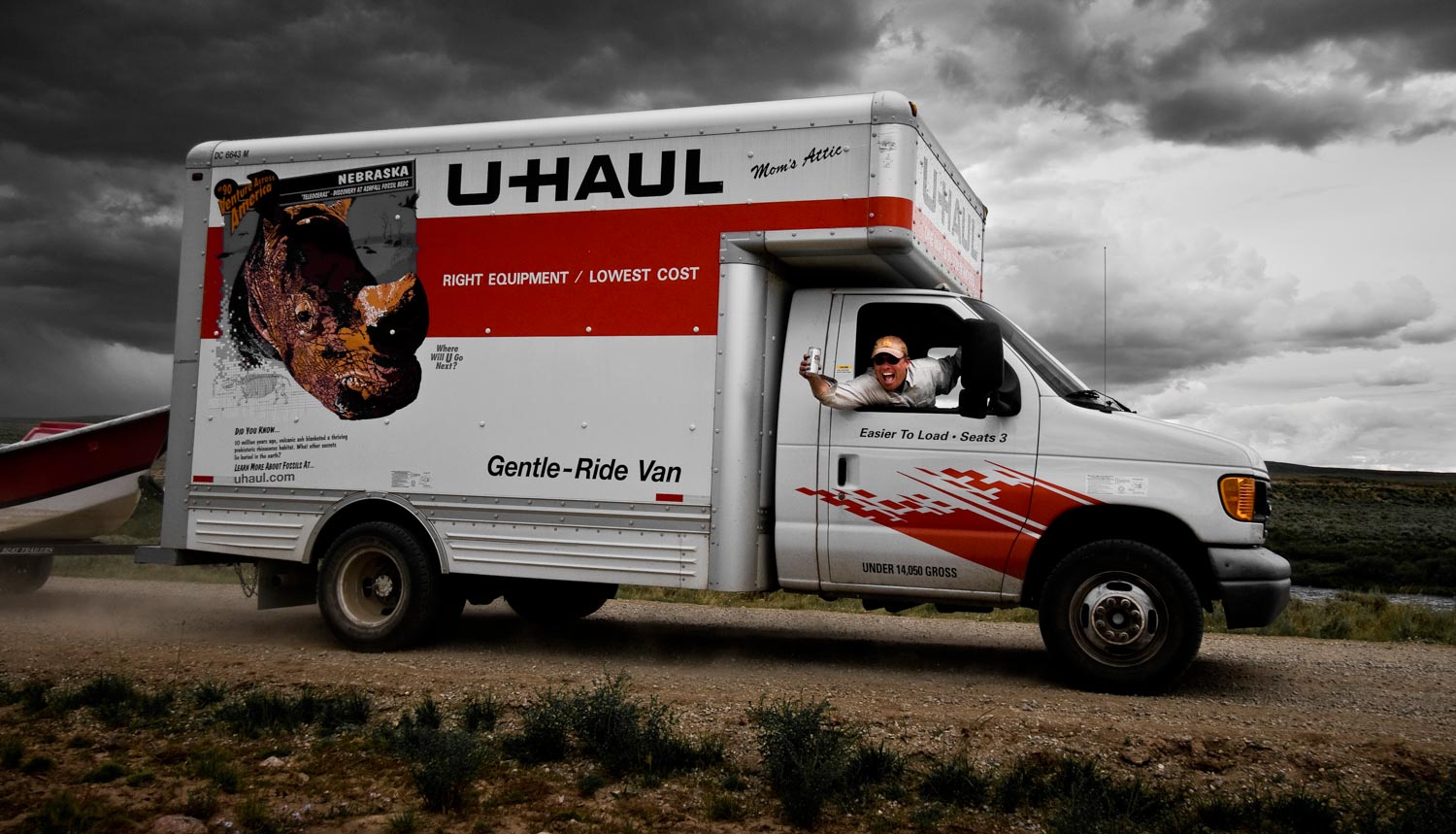
You may be poor, but you don’t have to fish like it.
Some of the greatest fly fishing adventures I’ve taken have cost me the least. I love fishing in exotic locations and spending time at great fishing lodges. Who wouldn’t? But that’s a fairly recent thing for me and primarily funded by my Nikon. Working for my fishing days has paid off for me, but that’s not an option for everyone.
I have never let a lack of funds get between me and great fly fishing. I’ve always figured out a way to get on the water and create some kind of epic adventure. Over the years I’ve figured out one or two tricks that make for great fly bum trips on the cheap. I’m going to share a few of them so you can do the same.
TEAM UP
There’s nothing more helpful than a good fishing buddy, or two. Having good friends to share both costs and experience with will make your fishing trips a hundred times better. A buddy can do more than split the cost of gas. He might lend you a rod or take turns rowing the boat. He may have knowledge about water that you don’t. He may just tell a good story or be a good listener. Finding good, compatible friends to travel and fish with is the most important step you can take in having a truly epic trip.
CAMP
Hotels cost money and do very little to enhance the fishing experience. Camping saves you a bundle and makes the trip a whole lot more special. Waking up on the river beats the hell out of a continental breakfast. Get your camping gear in order and go as light as possible. Less time messing with gear means more time fishing. I have gone so far as to buy an extra tent, sleeping bag and a few necessities which I keep at a friend’s house in Denver. If I find a cheap ticket I don’t even have to pay the baggage fees.
DRIVE
I drive to Idaho and Wyoming from Georgia on a regular basis. I don’t do it because I enjoy the scenery of western Kansas. I do it because it saves me a bundle. Gas is not cheap but it’s often at least as cheap as an airplane ticket. Driving allows me to take advantage of a whole host of cost-cutting measures.
I can carry all of my camping gear and even sleep in the truck sometimes. I tow my Adipose skiff which saves me renting a boat. I don’t have the expense of a rental car. It saves a fortune. I even have a power inverter in the truck to charge batteries or run small electronics. I’m pretty self-sufficient when I’m on the road.
I will frequently coordinate the drive with buddies who choose to fly. They help out with the gas money and I pick them up at the airport and we all save the cost of a rental car. Driving to your fishing destination just gives you a lot more options.
Read More »Louis’s Fly Fishing Yoga
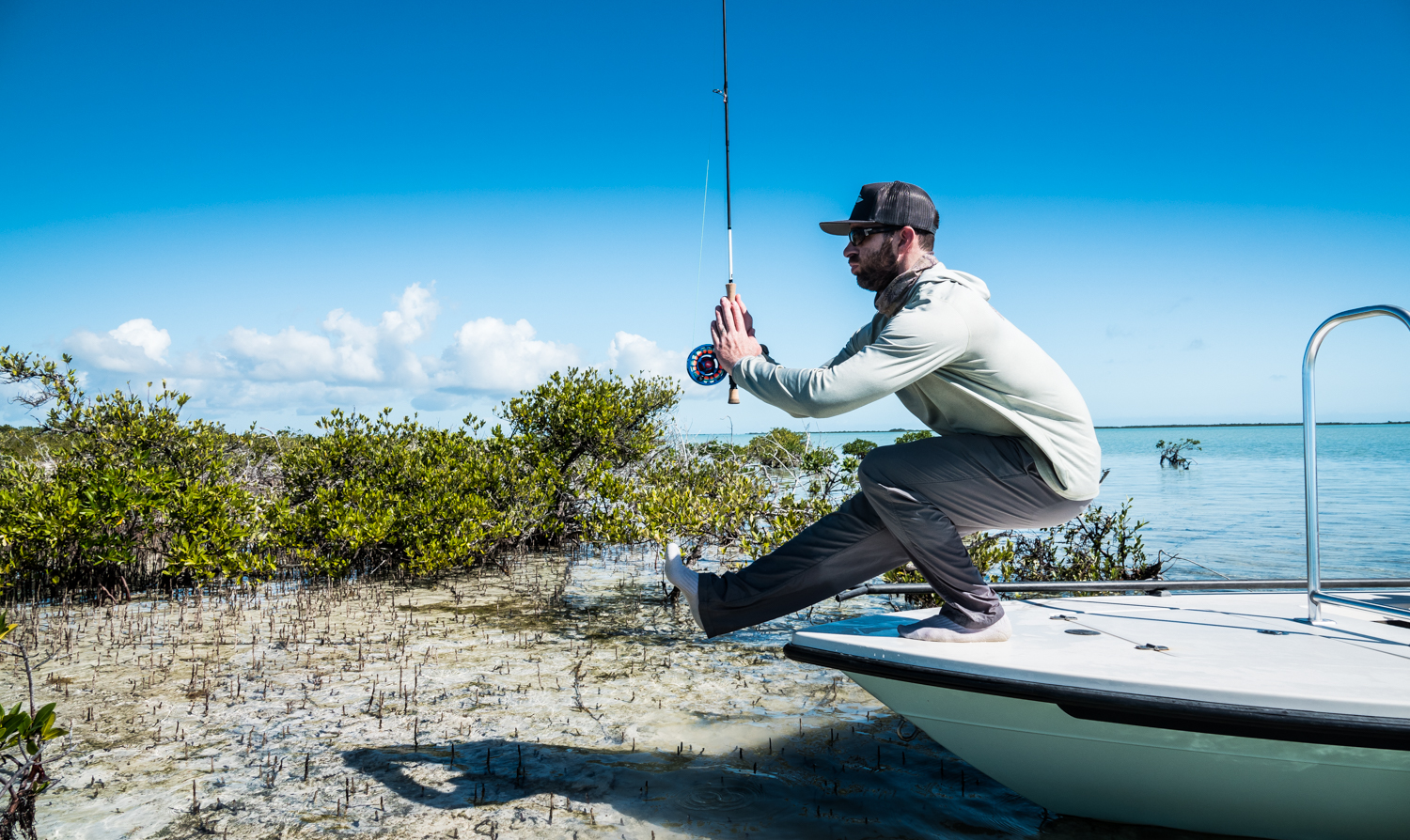
Here are two simple stretches that will help your fly casting.
From time to time I see a fly angler who has trouble with their casting because their shoulders are too tight. A limited range of motion can cause all kinds of problems with your cast. It’s worth taking some time do do some simple stretches.
I have a shoulder stretch I learned in martial arts training, that I do every day in the shower. It only takes a few seconds and it keeps my shoulders flexible. I have another I like to do before I hit the water. This insures that I’m in my best shape for casting.
I’m expecting my audience to have a lot of fun at my expense on this one. It’s silly to stretch in front of the camera anyway and I’m pretty tubby at the minute. It’s ok, go ahead and laugh. These stretches really do make a difference and you don’t have to do them in front of the camera.
WATCH THE VIDEO TO LEARN TWO STRETCHES THAT ARE GREAT FOR FLY FISHERS.
Read More »My Two Favorite Picky Trout Tailwater Nymphs
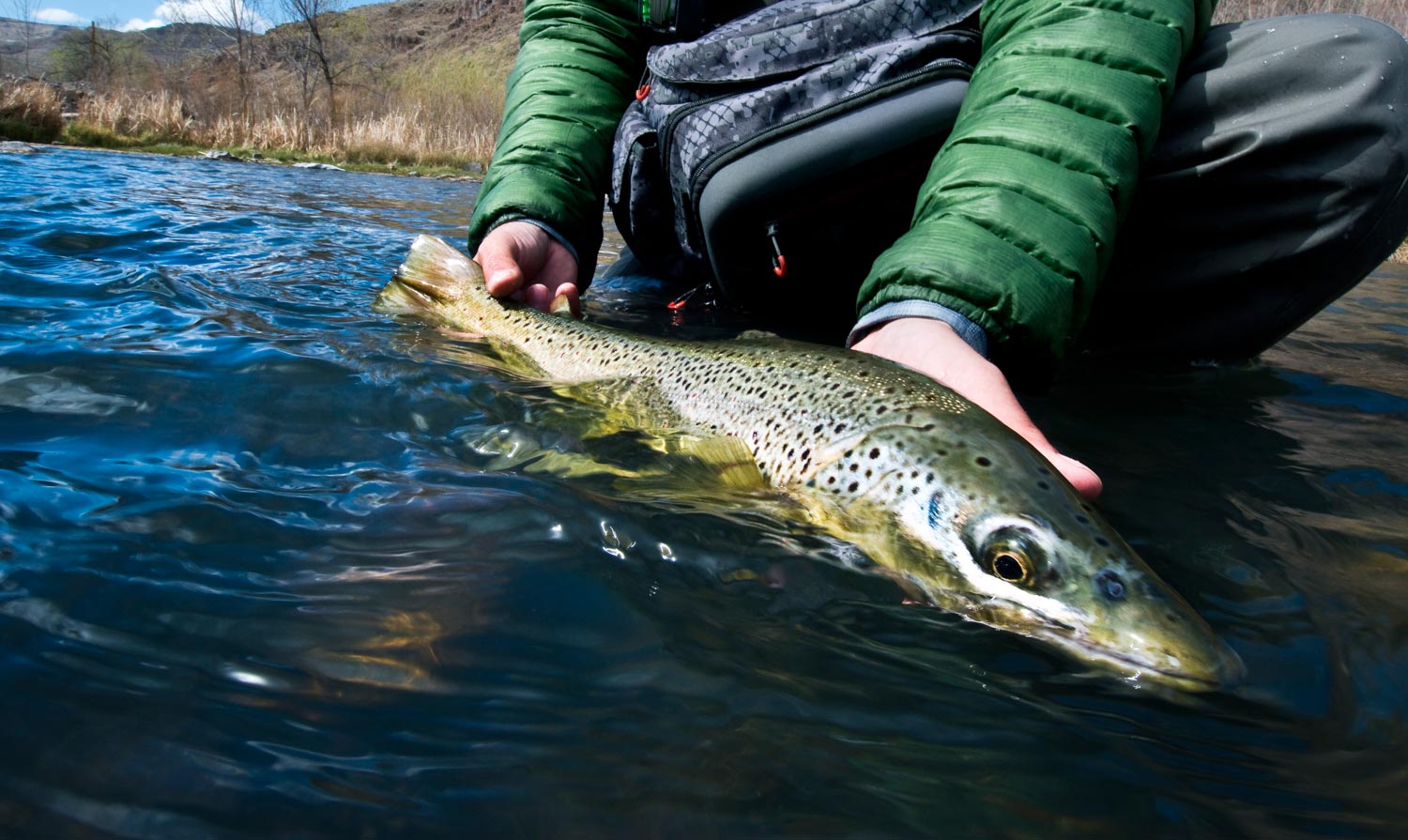
These two patterns never let me down on tough tailgaters.
Most of you are aware that Louis and I just got back from fly fishing and filming our segment for Playground Earth, sponsored by BFGoodrich Tires. We had the pleasure of fly fishing the Owyhee River, one of the finest trophy brown trout tailwaters I’ve ever had the opportunity to wet a line. The resident brown trout here proved to be quite picky, calling for not only accurate drag-free presentations from us, but our casts also had to be timed correctly to the feeding trout we had located. Out of the thousands of flies that we had on hand between us, two nymph patterns accounted for 80% of all trout landed. The splitcase bwo nymph and the splitcase pmd nymph were regular taken for naturals on the water througout our time on the Owyhee River. Never again will I only have a handful of these patterns on hand. I was down to my last splitcase nymph by the end of the trip.
Read More »Bait Dunkin’ to Lure Chuckin’ to Fly Floatin’
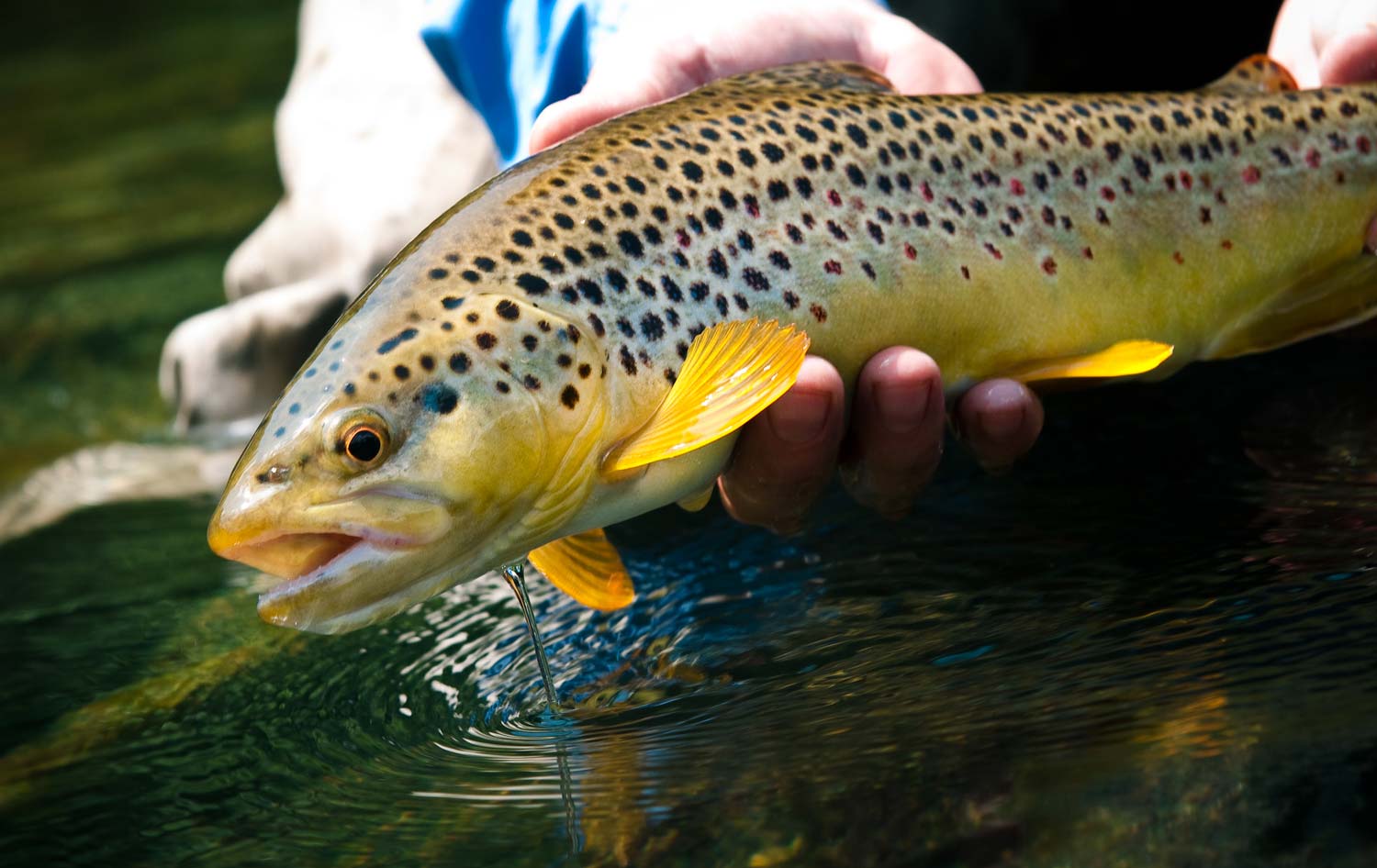
By: Alice Tesar
You could say that a desire to be a trout bum was in his blood, but you’d be ignoring the fact that Tim Widmer has found his own drift. What was in his family, specifically with his dad, was a desire to live a life that allowed for living off the land and being able to enjoy wild places. Tim’s dad never stopped dreaming of a life of living and exploring. Widmer recalls a time when his dad killed, skinned, tanned, and proceeded to sew his own clothes from an elk that the then-municipal employee had hunted, “he was doing bead work on the garments.” This intention is something Tim reflects on in times of life’s transitions. Tim credits his dad for making fly fishing into a career. You may remember Tim from “A Conversation with Fly Tier Tim Widmer” in 2014 but today we’re going to take a closer look at what it takes to be a guide, the value of mentors, and the “natural progression” of an angler.
As a small kid growing up in Estes Park, then “Timmy’s” dad worked for the city and would come home for lunch. After they ate together Timmy would go back to work with his dad and spend the afternoons fishing the ponds behind the office — “Bait dunkin” for browns. As he grew older, he started “lure chucking” along the Big Thompson with friends, they loved the wildness and the ease at which they’d catch fish. On an unlikely day where Timmy and his friend had been skunked, they headed back to their homes, along the way they encountered an old timer with a fly rod. They watched as he proceeded to catch six quality trout out of one hole. In awe they retreated. True to his father’s character instead of buying Timmy casting lessons, his dad bought him lessons to build a fly rod. Every day after track practice, Timmy would swing by Estes Anglers and sit with the owner and learned to build his first fly rod. Years following this, Timmy proceeded to cast this fly rod like a spin rod. He’d throw out the line and drag the dry fly in, like he’d known to do with a lure. Eventually the guides at the fly shop gave him some pointers on a better cast and some tips for fishing the Big T and lakes in Rocky Mountain National Park.
This is the part where “Timmy” becomes “Tim.”
Read More »Use Long Leaders for Flat Water
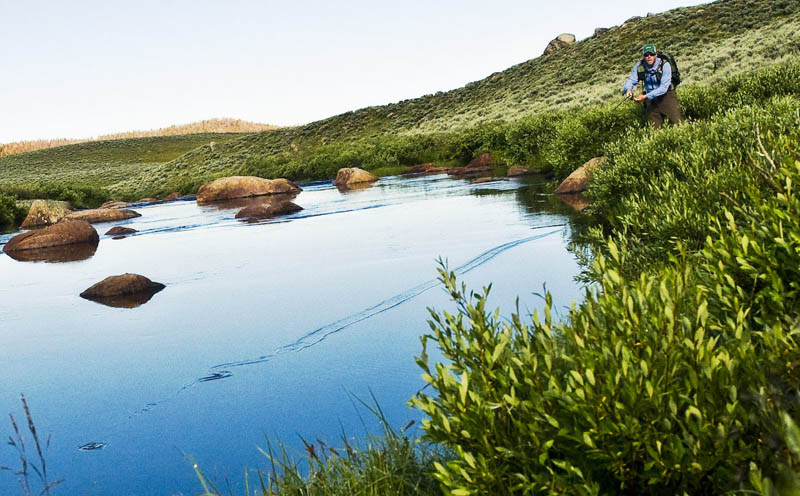
The saying a picture tells a thousand words is true, particularly in this case, as a tool for me explaining how important it is to use a long leader when fly fishing on flat water.
In the picture above, take a moment to view the disturbances the fly line and leader create on the water during a presentation.
Notice how little noise and footprint the leader makes when compared to the fly line. I was casting a Scott G2 5 weight rod with a 9′ leader and foam hopper, and I presented the fly as softly as possible. Anglers often don’t realize how much noise they’re creating during their presentations, and why so regularly they’re spooking the fish their casting to on flat water.
The fly line itself, creates the most noise during your presentation and is by far the biggest contributor to spooking fish. Try using a 10-12′ leader or even a specialty George Harvey dry fly leader, that’s designed to dissipate energy and lay out dry flies with slack. This will increase the distance between your fly and the start of your noisy fly line hitting the water, resulting in more hook ups and less spooks.
This fly fishing tip isn’t expected
Read More »Fly Fishing: The Woolly Bugger Isn’t all that, Or is it?
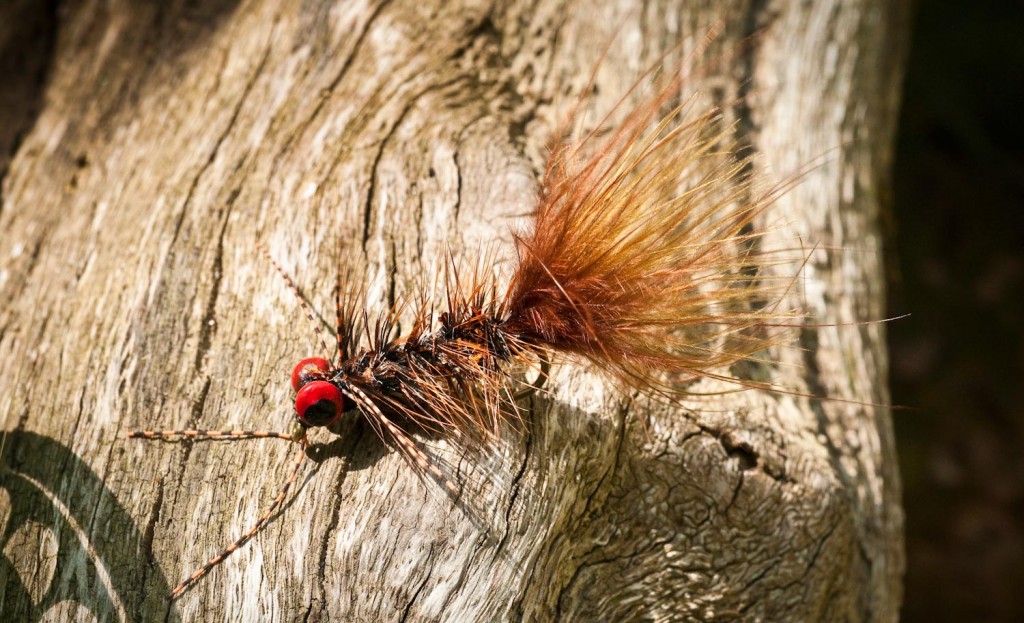
This isn’t Montana, Your Not Norman Maclean, and the Woolly Bugger isn’t all that.
This was a bumper sticker a guide buddy of mine had printed up a few years back. It was prominently displayed for his clients to read when they pulled up to greet him. That’s one hell of an ice breaker for checking fishing egos at the boat ramp, let me tell you. I give my boy J.E.B. Hall props for his comedic humor and gutsy style. For those of you who don’t know J.E.B., he’s a veteran Western North Carolina guide, Author of Southern Appalachian Fly Guide, and has spent multiple seasons guiding at Alaska West. Meet him one time and you’ll say to yourself, “this guy is the funniest guy I’ve ever met in my life”.
Most anglers fall into one of two categories when it comes to their perception of woolly buggers. They either love them or despise them. I love the fly pattern for two reasons. First, for its impressionistic design that’s capable of mimicking many different trout foods, and second, for its versatility in how the pattern can be fished. It’s rare for me to not break out a woolly bugger at some point during the day. When trout aren’t biting, I almost always can find fish willing to snack on them. The only time I keep woolly buggers out of the game and sitting on the bench, is when I’m fishing water where dry flies are the only thing required.
I believe in the woolly bugger so much, If I only had one pattern that I could take with me fishing, that would be it. Why the woolly bugger, you ask? Because it has probably caught more species of fish on this planet than any other fly pattern created since fly fishing was born. Now if I asked Jim Teeny, he would probably argue with me on this one, but what can I say, 90% of the time Jim strictly fishes his signature Teeny Nymph. And why shouldn’t he, the man has caught everything from steelhead to 100lb. tarpon on that fly. But if the tables were turned, and Jim Teeny would have invented the woolly bugger, I’d lay out a strong bet that’s what he’d be fishing instead. I meant no disrespect towards Jim Teeny, the man is a fish catching machine and a pioneer of the sport. He was just the perfect person to make my point on how effective woolly buggers are at catching fish, and I honestly couldn’t help myself.
Read More »2 Common Mistakes That Break Fly Rods While Fighting Fish
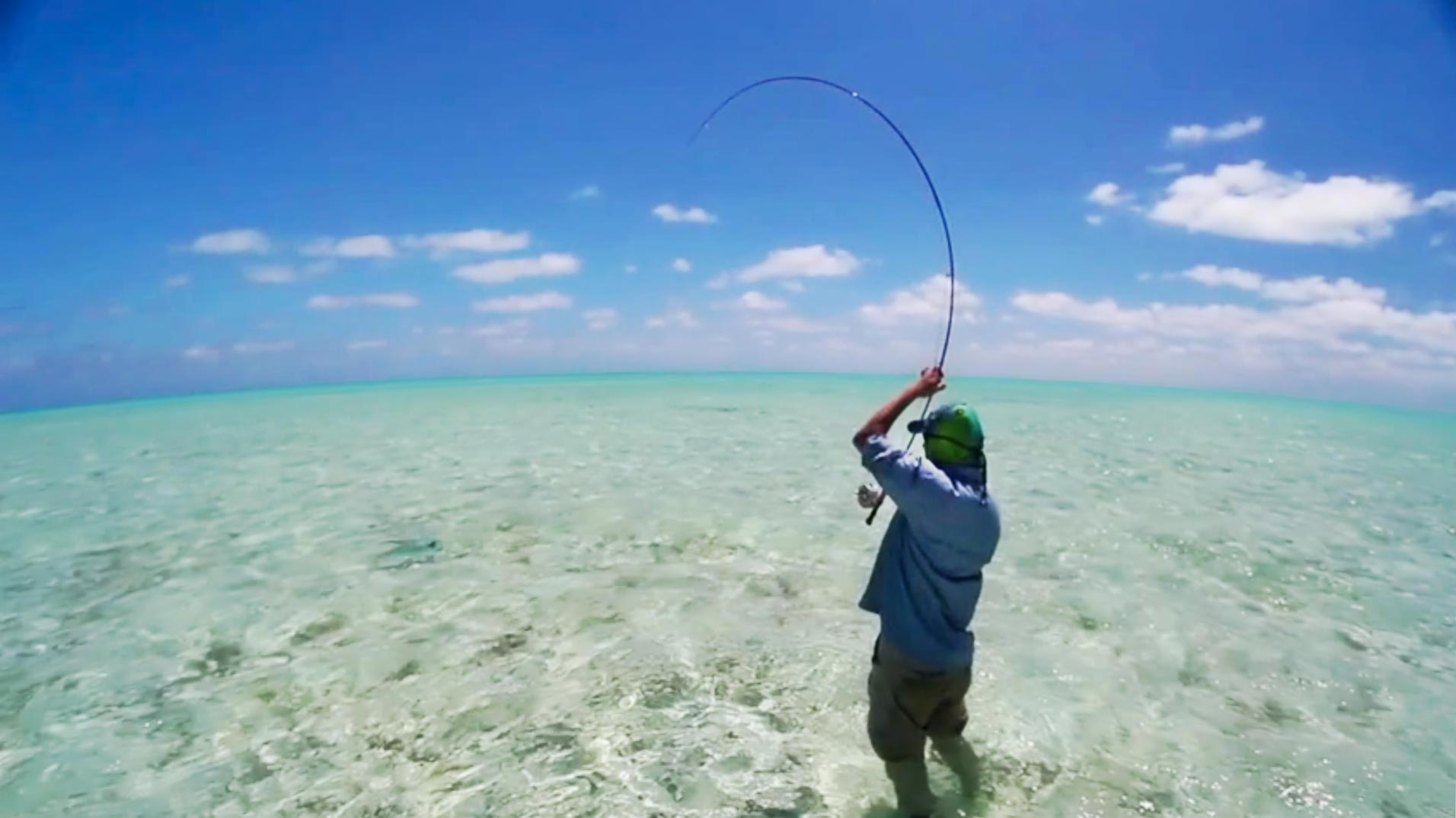
DO YOU EVER TALK BACK TO THE SCREEN?
I watched a video the other day of a guy fighting a permit down in Cuba. The whole time I kept yelling, “You’re gonna break your F-ing rod!” Sure enough, with the permit at his feet, the rod snapped. The fellow grabbed his leader and landed the fish but the damage was done. It didn’t have to end that way.
So Dude, if you’re reading this, I apologize for calling you out but that fish didn’t break your rod, you did. You made two basic mistakes that I see anglers make all the time, so I’m going to use you as an example. Look at it this way, you’re going to save a lot of fly rods and at least yours didn’t die in vain.
Here are the two most common mistakes that cause rods to break while fighting fish and how to avoid them.
Read More »Better Posture For Line Speed
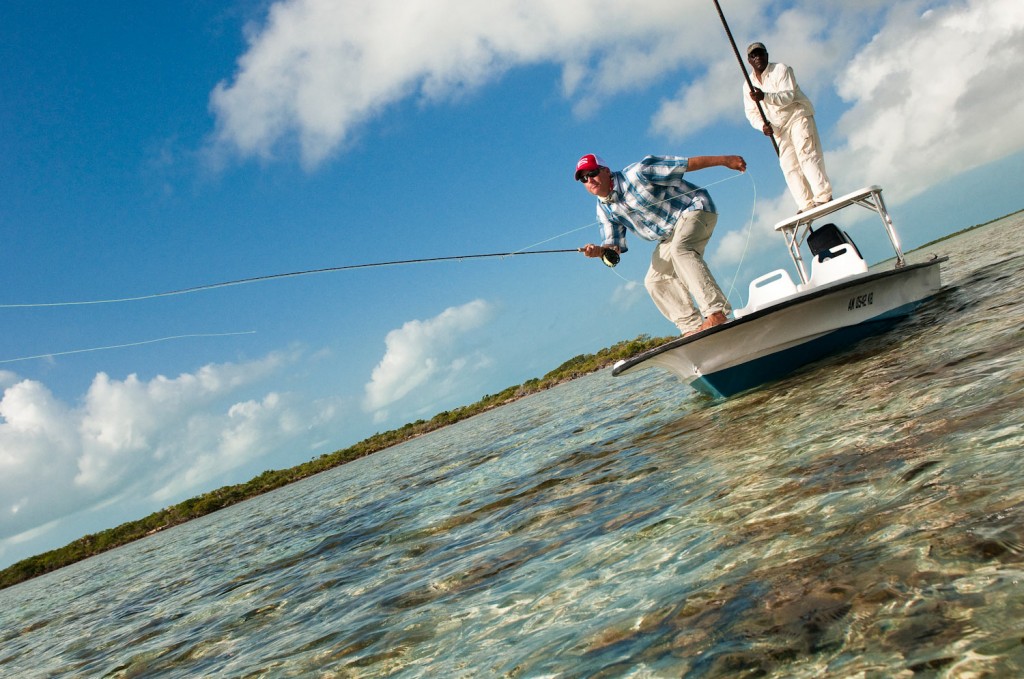
Remember when your Mother told you to stand up straight? Yeah, forget all that.
Posture matters but so few people think about the basics, like how they stand when they cast. The basics are exactly what makeup great casting technique so today Bruce is going to explain how your stance can put power into your cast. It’s a simple tip that will really help you punch that line into the wind so watch and practice.
Check out the video!
Read More »Speyitis
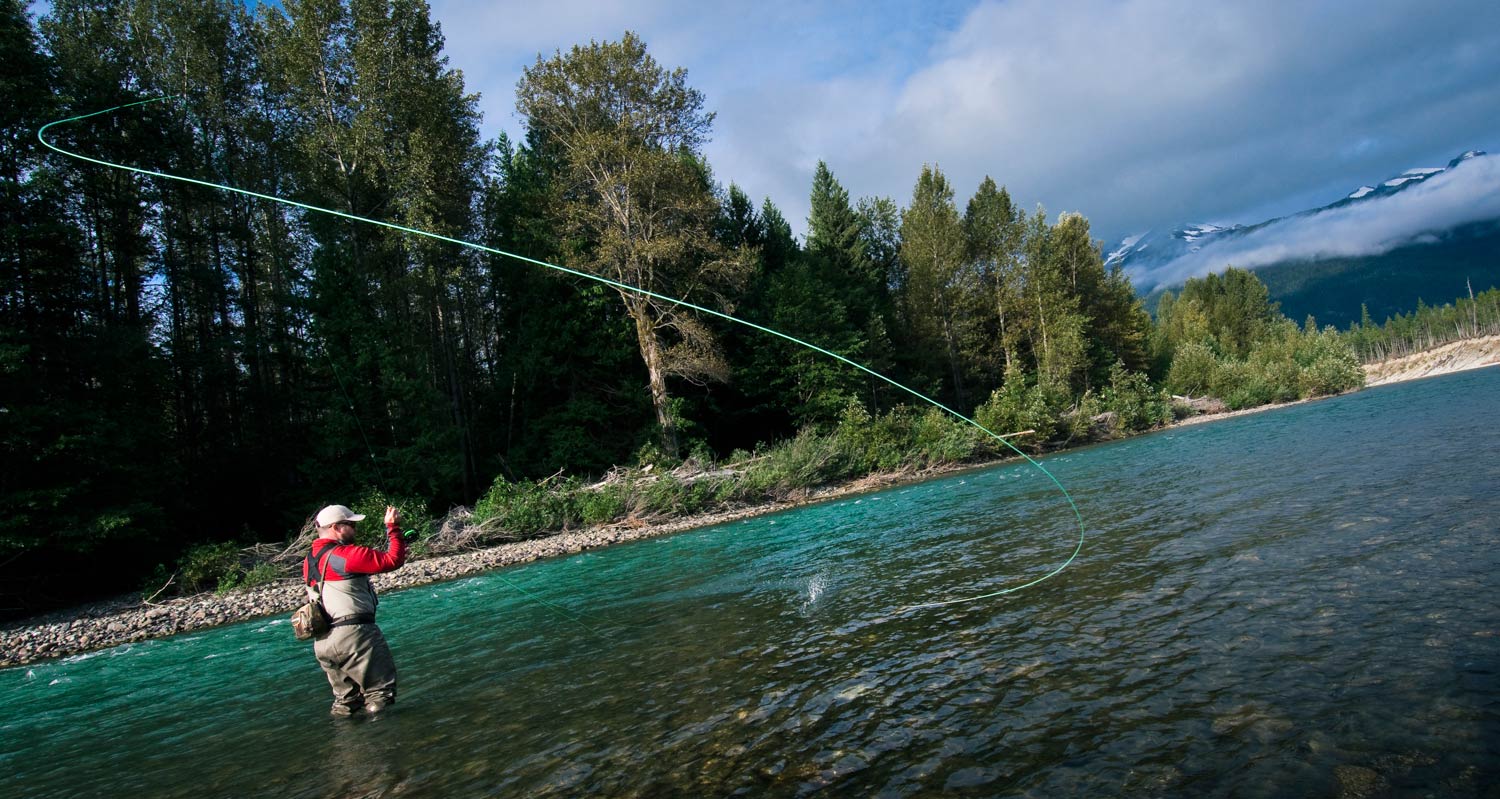
By Jeff Hickman
THE MOST COMMON FISHING PROBLEM I SEE AMONG SPEY FISHERS WHO CAN CAST WELL IS OVER CASTING.
I refer to this plague as Speyitis. Just because you can cast all the way across the river doesn’t mean that you should all the time. I know it is fun to throw a long line and its even more fun if you can get yanked way out there. For successful fishing it’s important to read the water and decide if a long cast is important there. Much of the time in many spots the fish is likely to be in the inside soft water. Casting across the seam way out into the heavy current you are wasting your time, not allowing your fly to sink and also not allowing it to effectively swing all the way in below you.
If fishing with sinktips, the question to ask yourself or your guide is
Read More »Take It With You When You Go
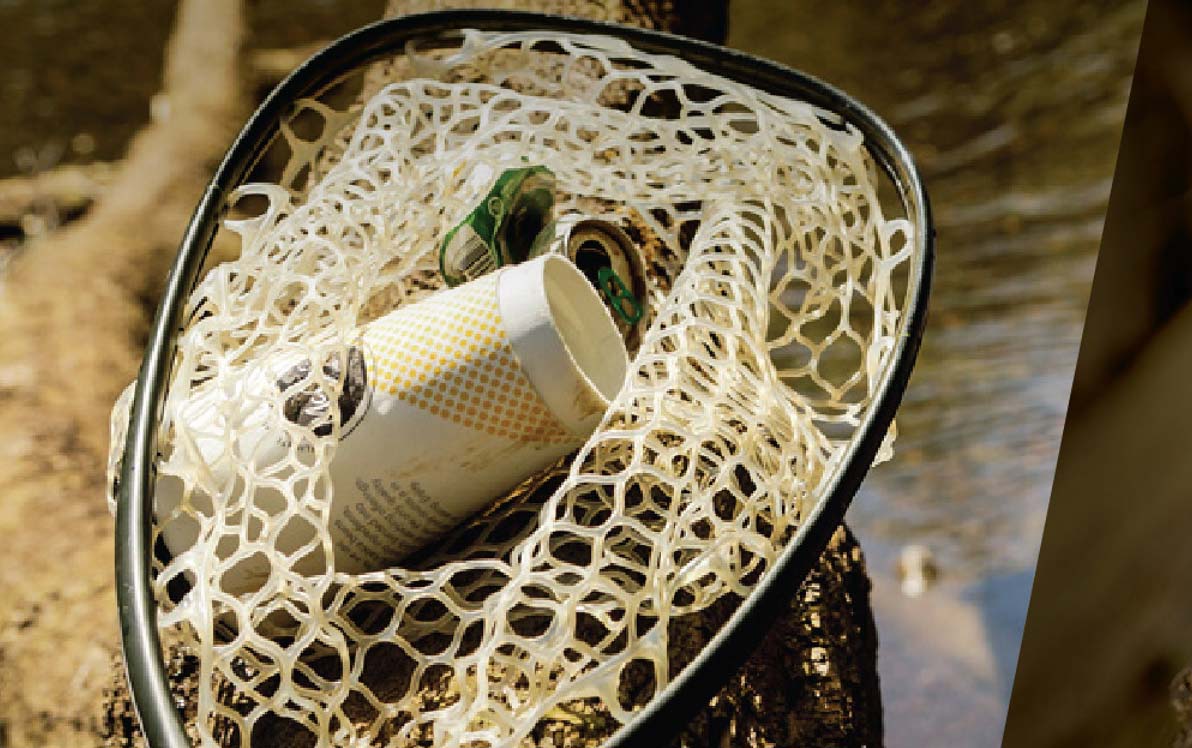
By Justin Pickett
PLASTIC BOTTLES AND BAGS. FLIP FLOPS. SPENT BEER CANS. A UNIROYAL TIRE THAT WAS OBVIOUSLY NEVER ROTATED. EVEN CREEPY DOLL HEADS. IT’S AN UNFORTUNATE REALITY OF FISHING – TRASH.
Walk the banks of any river or stream that either flows through or borders a metropolitan area and you will find what looks like the contents of a nasty, old, run-down department store that just projectile vomited its inner contents all over the river. However, these problems aren’t limited to those waters surrounded by concrete jungles. Walking along a local stream deep in the North Georgia Mountains last week, I found several pieces of trash left by those who use that wildlife management area to camp, hike, bike, and fish. Unfortunately, it is commonplace in even some of the more remote areas of our national and state lands to find trash as well.
It’s ugly, it’s sad, it sucks, and it’s our fault.
Here in Georgia, the Chattahoochee is the lifeblood of many of the state’s largest cities and metropolitan areas. In the metro-Atlanta area, we rely heavily on its water for everything from drinking water to agricultural, recreational, and industrial use. If we didn’t have this resilient river flowing through the heart of our capital, the many businesses, state parks, jobs, recreational activities, and agricultural resources would be nonexistent. What’s more, our dependence on this river will be a never-ending relationship that is certainly destined to become even more strained than it already is over the next decade and beyond, but here we are…trashing the very thing we depend on the most. It’s a classic case of “give an inch, take a mile”. The Chattahoochee River is giving and giving, and even morphing over time to adapt to our human wants and needs. However, just like you and I, the ‘Hooch has a breaking point when it comes to how much crap we are able to tolerate. Where or when will that breaking point occur? Who knows, but if we continue down the road of poisoning our own blood, we will certainly figure it out. It’s almost become human nature… Take something to its absolute limit, and only when the tipping point is reached, something bad happens and we have that “oh shit, we screwed up” moment will we step in and intervene. We need to do a little better.
The Chattahoochee is far from being alone, though. It doesn’t matter where you live, your state has a river(s) that is battling the same daily barrage of garbage. Some cities and states are
Read More »